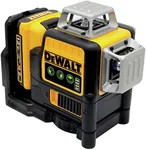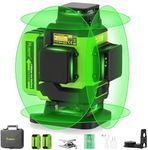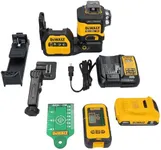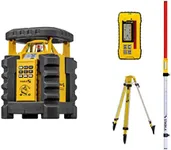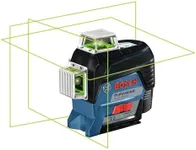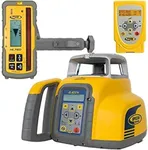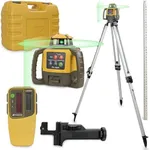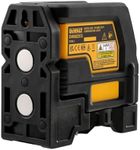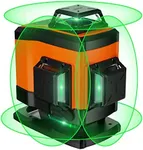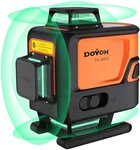Buying Guide for the Best Laser Levels
Choosing a laser level can make a big difference in how precise and efficient your home improvement or construction projects turn out. Whether you’re hanging shelves, installing tile, or framing walls, a laser level projects a perfectly straight line, making it much easier to align and level your work. The key to picking the right laser level is understanding how different features affect usability and performance, and making sure the tool matches your specific needs. Here’s how to look at the most important specs and what they mean for you.Laser Type (Line, Dot, Rotary)The type of laser determines what kind of lines or points the tool will project. Line lasers show straight lines on flat surfaces, dot lasers provide reference points, and rotary lasers spin to create a continuous 360-degree plane. If you’re doing indoor projects like hanging cabinets or installing trim, a line or dot laser is often sufficient. Large-scale jobs like leveling outdoor foundations or installing drop ceilings usually call for a rotary laser. Think about the kind of marking and layout tasks you’ll be doing most to narrow down your choice.
AccuracyAccuracy tells you how close the laser’s line or point will be to true level or plumb over a specified distance, usually stated as a fraction of an inch per a certain number of feet (like ±1/8” at 30 ft). The smaller the deviation, the more precise the tool is. For tiling, cabinetry, or detailed interior work, you’ll want higher accuracy. For rough framing or landscaping where minor variation doesn’t matter as much, lower accuracy may suffice. Match your accuracy needs to the level of precision your projects demand.
Leveling Method (Manual vs. Self-Leveling)Laser levels can be adjusted manually or automatically (self-leveling). Self-leveling models use internal mechanisms to give you perfectly level lines even on slightly uneven surfaces; this is great for speed and ease of use. Manual models need you to align the tool yourself, which can work for simple projects but takes more time and care. If you want hassle-free operation and higher confidence in your setups, go for self-leveling. Manual models are fine if you don’t mind spending a bit more effort to ensure accuracy.
RangeRange tells you how far the laser’s line or point stays visible and usable, commonly measured in feet or meters. For small indoor tasks, even a short range is plenty. For big rooms, outdoor work, or if you need to mark long distances, you’ll benefit from a greater range. Some lasers can also be used with detectors to extend their effective range for exterior jobs. Think about where you’ll use the level most, and choose a range that covers those environments comfortably.
Visibility/Beam BrightnessThis refers to how clearly you can see the laser line or point, which depends on the strength of the laser and the lighting in your workspace. Brighter beams are easier to see in well-lit rooms or outdoors, while dimmer beams might be fine for darker, enclosed spaces. Good visibility minimizes eye strain and mistakes, so if you plan to work in bright conditions, opt for a model with a reputation for high beam brightness. Think about your most common work environment to prioritize this feature.
Mounting OptionsMounting options determine how and where you can place the laser level during use. Some come with magnetic mounts, tripods, or wall brackets, which add convenience and stability. A good mounting system helps you set up the laser at any height or angle you need for your project. If you’ll be working on various surfaces or heights, consider a model with flexible mounting choices. This makes setups quicker and less frustrating, especially for complex jobs.
Durability and Weather ResistanceDurability and weather resistance relate to how well the laser level holds up to dust, drops, or wet conditions. If you anticipate using your level outdoors or on active construction sites, look for a model with a strong case and weatherproof rating. For basic indoor use, this may be less critical. Assess your work environment to balance ruggedness with your actual usage needs.
